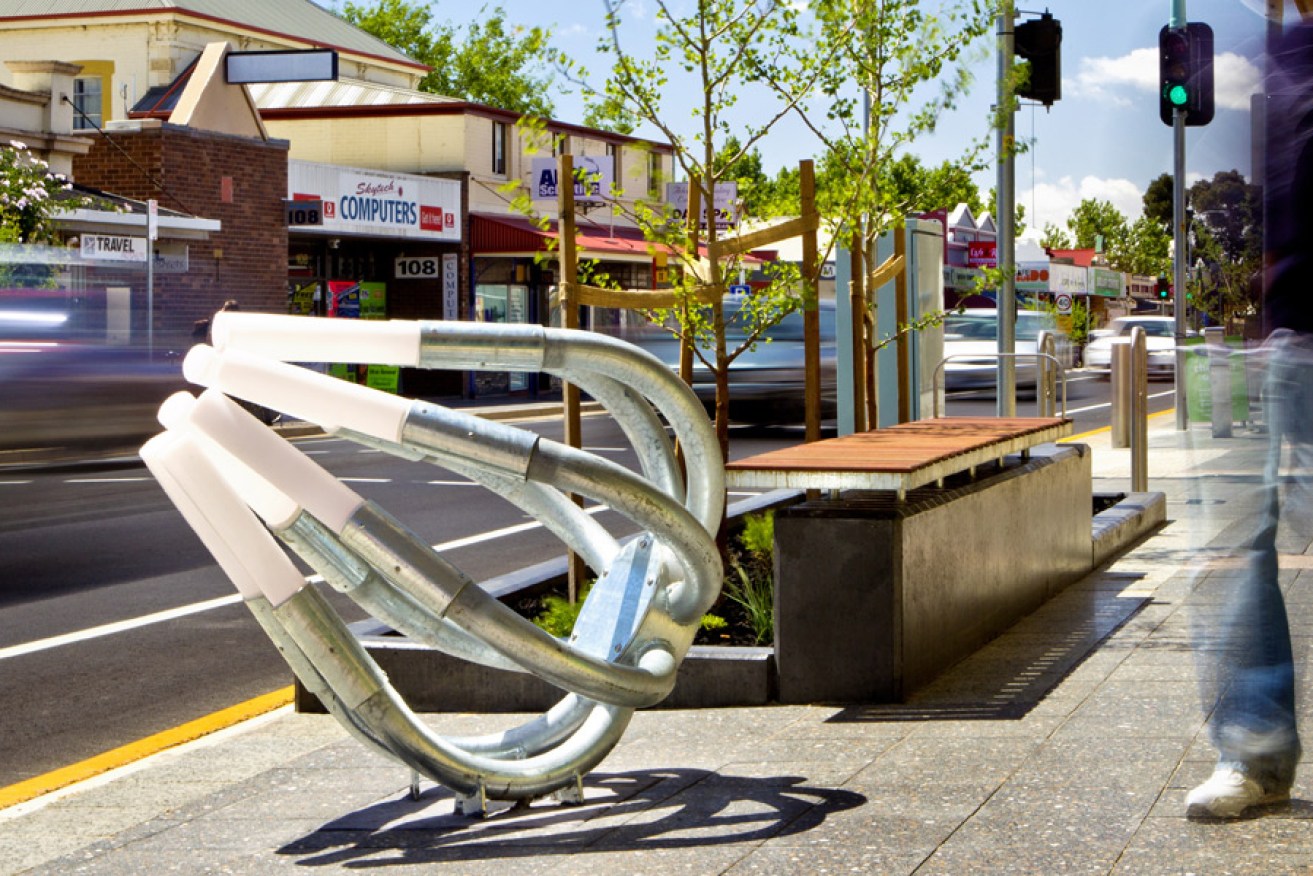Car no longer king in urban streetscapes

The Prospect Road corridor underwent a $3.4 million upgrade. Photo: City of Prospect
A pedestrian-friendly approach to urban design is transforming some of Adelaide’s streetscapes into thriving community and commercial hubs.
Landscape architect Lisel Ashby told a recent urban design conference that a tough business environment had helped force a rethink about the role of city streets.
“Traditionally, a street was defined purely by its transport function,” she said.
“But I think we reached a point where we needed to take a step back and think about things a little bit differently.
“The environment on our streets was really bad – trade and retail were really struggling. I think it had reached a real tipping point.”
Since 2011, Ashby’s Adelaide firm, Jensen Planning and Design, has adopted principles contained in the State Government-commissioned Streets for People Compendium in its re-design of Prospect Road, and Leigh and Bank streets in the CBD.
Prepared by the SA Active Living Coalition, The Streets for People framework encouraged collaborations of planners, architects and engineers to create passageways that “reclaim streets as not solely the domain of motor vehicles, but also of pedestrians and cyclists”.
Lower speed limits, wider pedestrian walkways, partial vehicle traffic closures and the installation of public artworks are among the “pedestrian-friendly” policy recommendations that have been implemented.
Peter Jensen told InDaily the redeveloped urban streetscapes had created community centres that encouraged social interaction and stimulated local business.
“I think what these developments have done is create a great place for people to come to – and when people come to a great place, they generally want to return and spend more time and money there,” he said.
“These places have become real community centres.”
Ashby said that prior to its re-design in 2011, the congested Prospect Road corridor reflected people’s high dependence on private cars.
“Previously, Prospect Road contained narrow footpaths that were shaded only by awnings. Further, the annual average traffic per day was 20,400 and it was very congested through peak hour.
“There was a lot of cutting through side-streets.”
As part of the $3.4 million upgrade, the council constructed a “village heart” precinct, introduced 24-hour bike lanes, created more opportunities for pedestrians to safely cross the road, and built outdoor seating areas.
“We removed most of the shop-front carparks, and now there is more footpath space available for public seating, landscaping and outdoor dining to attract people to the retail strip,” Jensen said of the Prospect Road upgrade.
“It has increased foot traffic and there is new investment by businesses, which I think is a great sign of confidence.
“The (Prospect Road) redevelopment has shown that you don’t always need car parks out the front of shops for businesses to be successful. I think we have really challenged that idea.”
In Adelaide’s CBD, a series of “laneway activation” projects has incorporated the Streets for People principles to create a pedestrian and cycling-friendly north-south link from the Central Market to the Riverbank precinct.
According to Ashby, the changes made to the Leigh and Bank street laneways – which included the construction of 15 “parklet” seating spaces – have encouraged pedestrians to stay, rather than transit through, the inner city.
“For a long time there was nowhere to eat your lunch in the city unless you took it back to the office.
“The design of Bank Street proposed the idea of park-bench-style seating and now there is a place for people to sit and stay without spending money.”
The partial closure of Leigh Street to motor vehicle traffic – an idea originally introduced for the Splash Adelaide program – has allowed for the introduction of landscaping and public art.
“We could not convince all the traders that road closure was to their benefit, so access and parking has been maintained,” Ashby said.
“But the upgrade has allowed for the introduction of artwork and the permanently central section is buzzing.”
Design plans for similar project in Commercial Road, Port Adelaide and Sixth Street in Murray Bridge have also received council approval.




